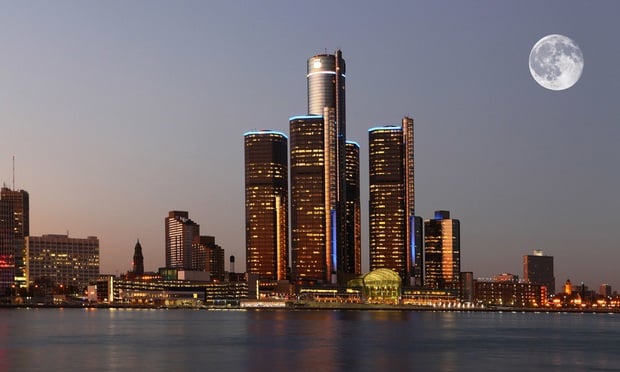The study was recently released by the Child Proofing Our Communities Campaign. The study found 43 schools in California, 818 schools in Massachusetts, 36 schools in New Jersey and 235 schools in New York, along with the Michigan schools, that are within a half-mile of a Superfund or state-identified contaminated site.
At Beard, the news is old. Fearful parents threatened to not send their children to the school in September, only to be reassured by administrators that it was safe.
However, union workers on the new building say they got sick at the site. According to AFSCME 345, two members of Ironworkers 25 developed rashes while working on the Beard school, and six members of Plumbers 98 were made sick with nausea and rashes.
"I don't think the health of the workers and kids is being taken seriously by the school system. It's a public relations show of putting up buildings fast. Technologically advanced buildings are no substitute for the health of workers and students," says Percy Jackson, AFCME 345 President. The union said two 10,000-gallon underground tanks, not registered on maps, were discovered during construction. Also, union officials say toxic soil was brought over to create a berm at the school.
The writers of the Child Proofing study say Detroit school administrators were negligent in their lack of foresight about putting students at the school. It could be, said the study, that the district wasn' t worried because the district is low income.
"Spanish is their primary language. None of the letters sent home to parents about meetings to discuss the school, cleanup and other issues were written in Spanish," the report said.
The Michigan Department of Community Health admitted some levels of arsenic and other contaminants remain in the soil at the school, but that an extensive cap and barriers have been placed on the property to protect children.
At another site, this time a toxic landfill in Westland, the report is old news. Cooper Elementary School, built on the landfill, was closed in 1991 after investigations turned up dangerously high levels of lead, mercury, cadmium and PCBs on the school's playground.
The report writers say the need to erect quick schools in low-income areas have pushed districts to build over former industrial property sites, mainly because it's inexpensive and available in an area where there's probably not much vacant land.
The campaign's siting committee is encouraging parents, land owners and developers to clean up contaminated sites before building schools on them, or to look for a greener site for children's learning areas instead of a former industrial facility property.
Want to continue reading?
Become a Free ALM Digital Reader.
Once you are an ALM Digital Member, you’ll receive:
- Breaking commercial real estate news and analysis, on-site and via our newsletters and custom alerts
- Educational webcasts, white papers, and ebooks from industry thought leaders
- Critical coverage of the property casualty insurance and financial advisory markets on our other ALM sites, PropertyCasualty360 and ThinkAdvisor
Already have an account? Sign In Now
*May exclude premium content© 2024 ALM Global, LLC, All Rights Reserved. Request academic re-use from www.copyright.com. All other uses, submit a request to [email protected]. For more information visit Asset & Logo Licensing.






